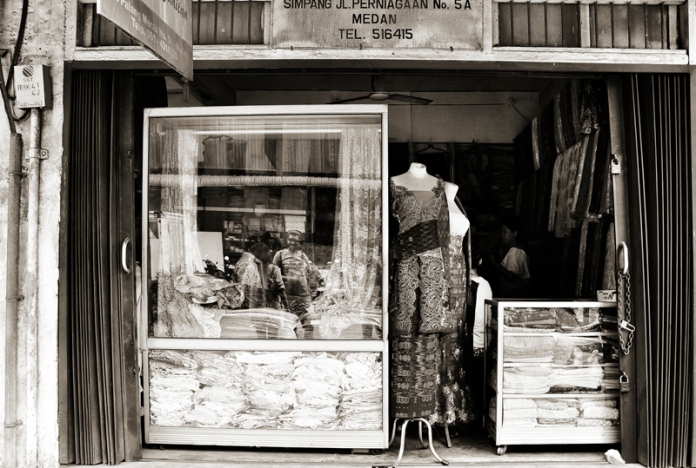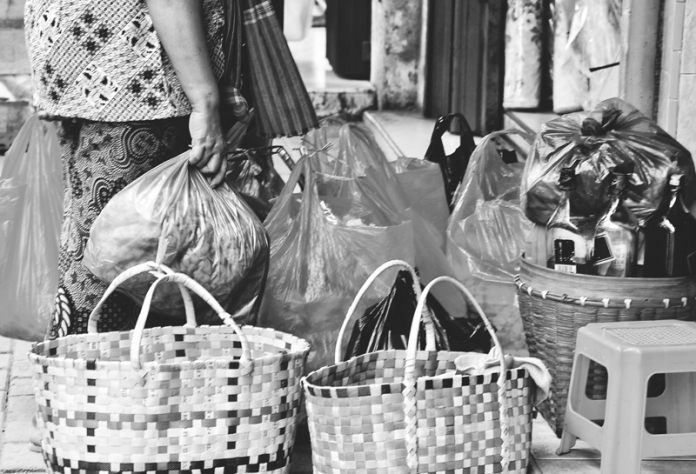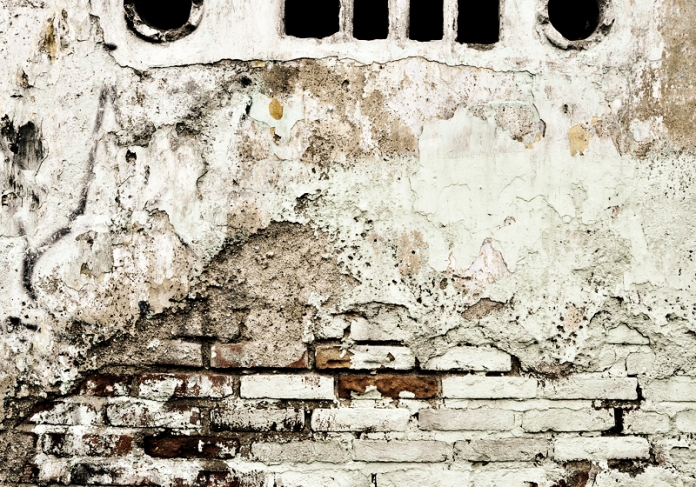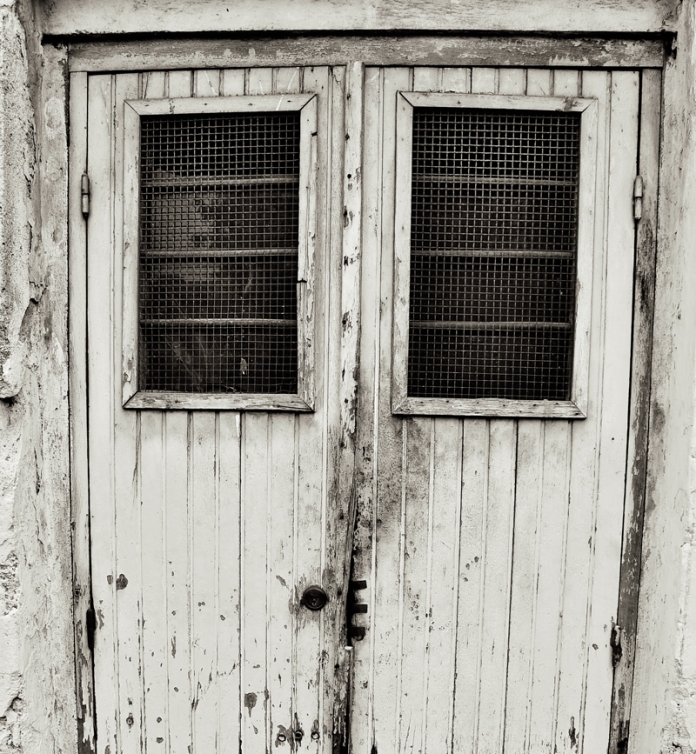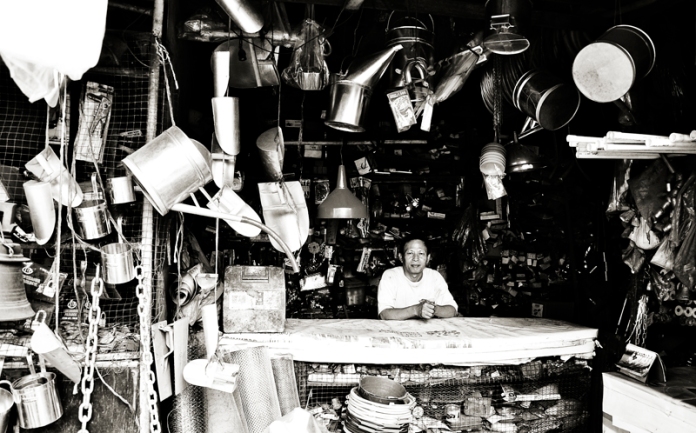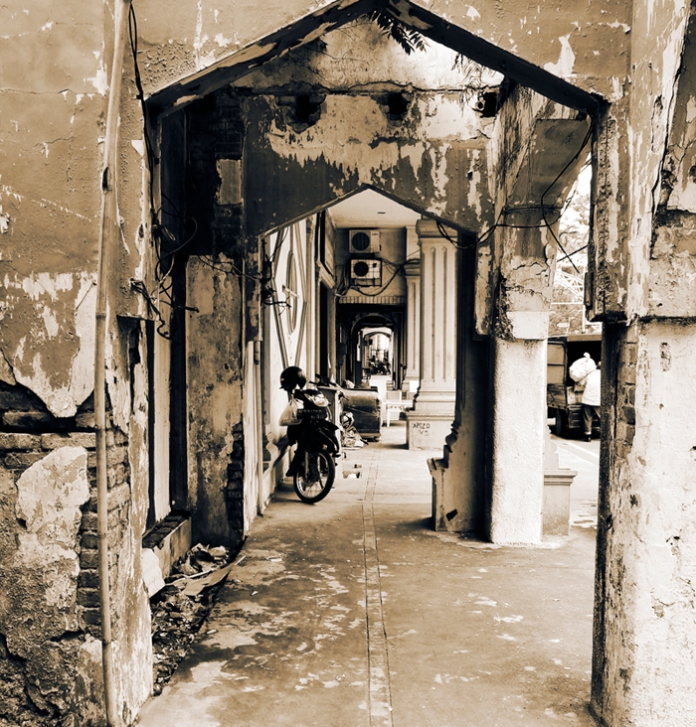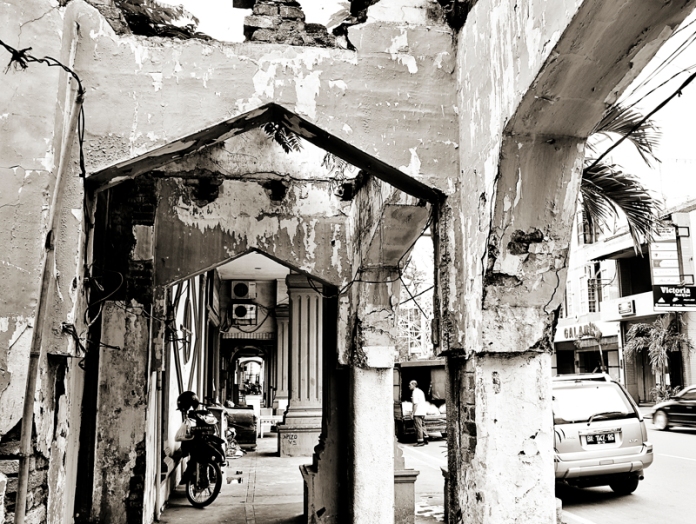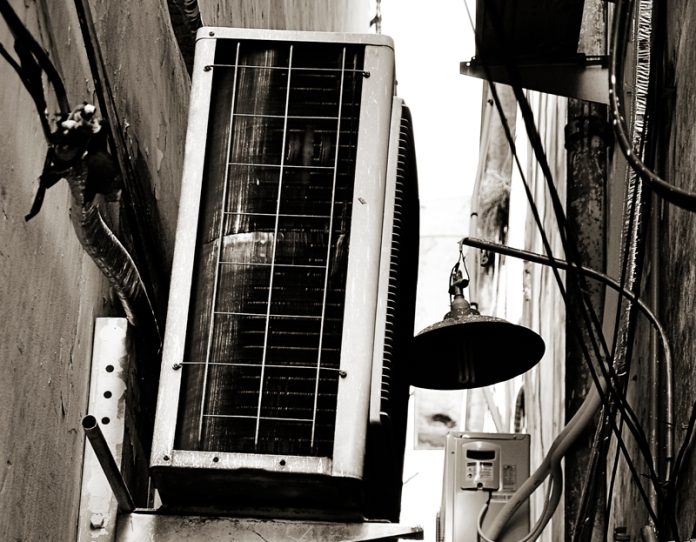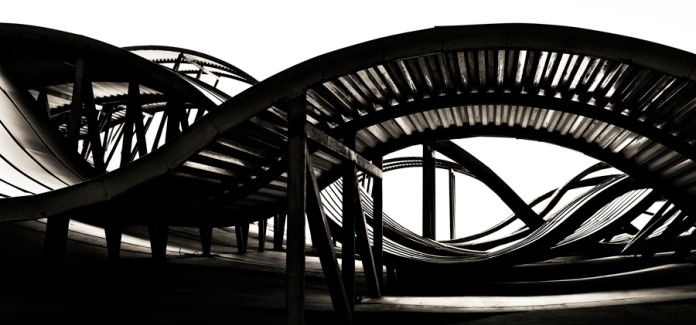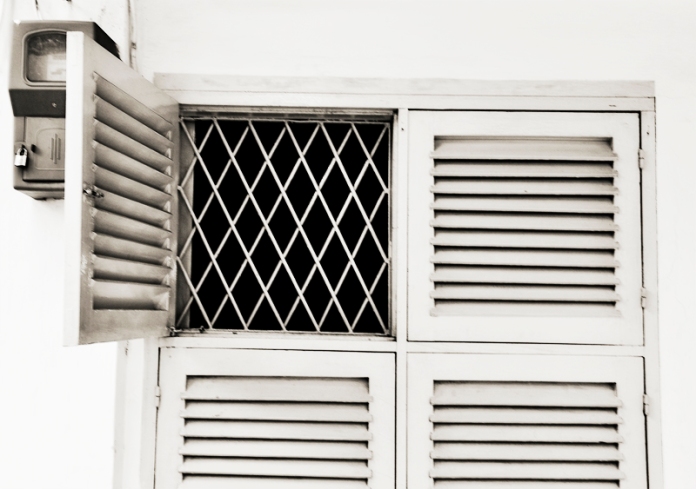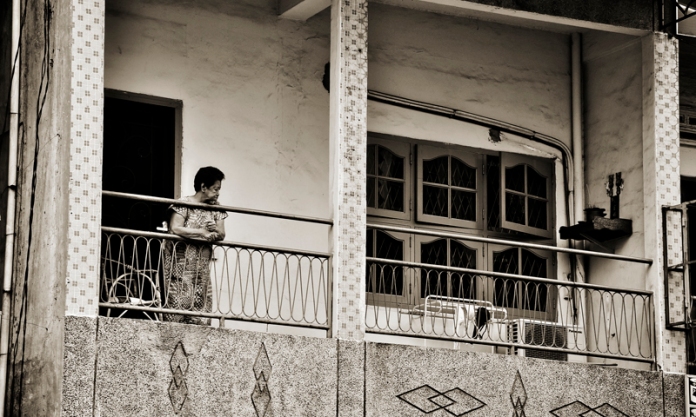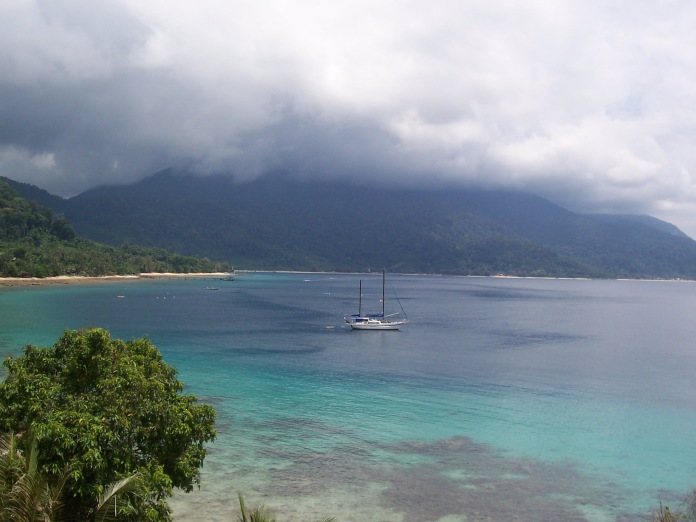“The becak is the king of the road,” she tells me, half-yelling over the combined cacophony of buses, scooters, cars, vans, trucks and other becaks. Medan swims past in a daze of fluorescent bulbs. The becak we’ve hired zips in and out of traffic like a trishaw on speed. It is the king of the road, I tell myself. Even the buses slow down for it, like elephants accustomed to the whims of a pesky but somewhat endearing mouse.
The back of our becak is uncovered, its canvas lost somewhere. This means that our backs are exposed to traffic and I keep turning around to check if someone is going to pull me from the back, grab my hair, scratch my skin, yank me out of the moving vehicle. I keep waiting for disaster to happen.
“One time I was sitting in a becak,” she says. “I don’t like sitting close to the driver so I sat towards the edge. I was holding my bag like that –” she motions to her left shoulder which is directly exposed to traffic “– and these two men on a scooter ride up next to the becak. The next thing I know, the pillion grabs my bag!” She pauses for effect.
“Then what happened?”
“I gave the pillion a great fucking kick and he had to let go. I was shaking after that.”
It is Saturday evening, a little after 8PM, and Medan is screaming with life. Horns are bleeping tooting honking blaring from every possible direction. We brake often, lurching forward in inertia. She sits beside me, nonplussed. After four years in Indonesia, she’s tough as leather. I, on the other hand, am still soft and squishable, prone to dents and scrapes.
The more I look around, the more Medan seems like a place nobody goes to. It is an accident of travel. The Saturday nightmarket is a congested lane of motorcycles vying for space with pedestrians and vendors. Counterfeit Calvin Kleins and Mont Blancs, faux leather wallets and frilly hairbands – the usual suspects. There are no breathtaking sunsets or idyllic sea views here, no quick getaways. Who would want to read about a decaying town melting into peeling plasters and weeping walls? Medan is a sad, mournful wail of colours, all of them saturated with rust and decay, like a badly damaged film that was once someone’s pride, but now lies forgotten in a store room somewhere, unwatched, unloved.

